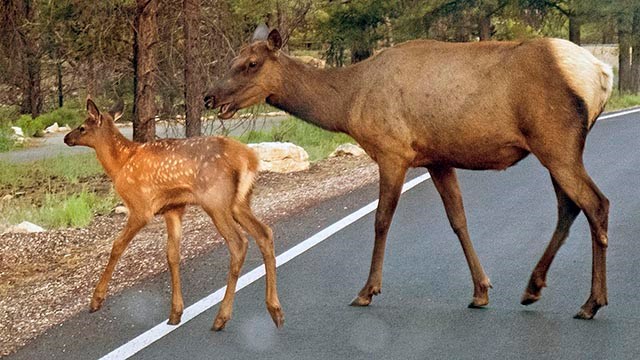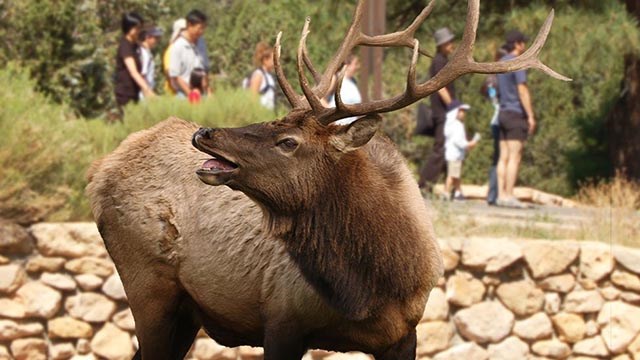
Rocky Mountain ElkElk (Cervus canadensis) are the largest member of the deer family (Cervidae) in Grand Canyon National Park. The Rocky Mountain Elk (Cervus canadensis) in the park come from 303 individals introducted to the state from 1913-1928 from Yellowstone National Park. While they can appear calm, elk are wild animals that can be dangerous. Description

Elk Calving Season

Elk Mating Season
How to Stay Safe
|
Last updated: March 14, 2024
